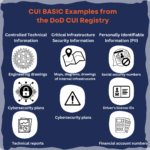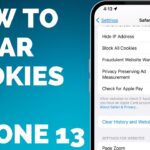How to Delete a Facebook Page: A Comprehensive Guide
Facebook is one of the most widely used social media platforms globally, allowing individuals and businesses to connect, share, and engage with their audiences. However, there may come a time when you decide to delete a Facebook page, whether it’s a personal page, a business page, or a community page. This comprehensive guide will walk you through the process of deleting a Facebook page, provide tips for managing your social media presence, and answer frequently asked questions.
Understanding Facebook Pages
Before diving into the deletion process, it’s essential to understand what a Facebook page is. Unlike personal profiles that are meant for individual users, Facebook pages are designed for businesses, organizations, public figures, and communities. Pages allow users to share content, interact with followers, and promote services or products.
Reasons for Deleting a Facebook Page
There are several reasons why individuals or businesses may choose to delete a Facebook page:
- Change in Business Strategy: A business may decide to pivot its marketing strategy, making the existing page irrelevant.
- Lack of Engagement: If a page is not receiving the desired engagement or interaction from followers, it may be time to delete it.
- Rebranding: A business may undergo rebranding and create a new page that better reflects its new identity.
- Privacy Concerns: Individuals may choose to delete personal or community pages due to privacy concerns or a desire to reduce their online presence.
How to Delete a Facebook Page
Deleting a Facebook page is a straightforward process, but it does require administrative access to the page. Follow these steps to delete your Facebook page:
Step 1: Log into Your Facebook Account
- Open your web browser and go to the Facebook website.
- Log in to your account using your email address and password.
Step 2: Navigate to Your Page
- Click on the “Pages” option in the left-hand menu of your Facebook homepage.
- Select the page you wish to delete from the list of pages you manage.
Step 3: Access Page Settings
- Once on your page, click on the “Settings” option located in the left-hand menu.
- This will take you to the settings menu for your page.
Step 4: Delete Your Page
- In the settings menu, scroll down to the “General” section.
- Look for the option that says “Remove Page.”
- Click on “Edit” next to “Remove Page.”
- You will see a link that says “Permanently delete [Your Page Name].”
- Click on this link.
Step 5: Confirm Deletion
- Facebook will prompt you to confirm that you want to delete the page. Read the warning carefully, as deleting a page is irreversible.
- If you are sure you want to proceed, click on the “Delete” button.
Step 6: Wait for Deletion Confirmation
- After confirming, your page will be scheduled for deletion. Facebook may take a few days to process the request.
- You will receive a notification once the deletion is complete.
Important Considerations
- Backup Your Data: Before deleting your page, consider downloading any important data, such as posts, photos, and follower information. Once the page is deleted, this data will be permanently lost.
- Page Deletion is Permanent: Deleting a Facebook page is irreversible. Once deleted, you cannot recover the page or its content.
- Admin Access Required: Only users with administrative access to the page can delete it. If you are not an admin, you will need to contact someone who is.
Managing Your Facebook Presence
If you’re considering deleting your Facebook page but are unsure, here are some alternatives to consider:
- Deactivate Your Page: Instead of deleting, you can deactivate your page temporarily. This allows you to take a break and reactivate it later if you choose.
- Update Content: If engagement is low, consider updating your content strategy. Post more frequently, engage with followers, and promote your page to increase visibility.
- Change Page Roles: If you’re stepping back from managing the page, consider assigning another admin to take over.
Frequently Asked Questions (FAQ)
1. Can I recover my Facebook page after deletion?
No, once a Facebook page is deleted, it cannot be recovered. Ensure that you have backed up any important data before proceeding with deletion.
2. How long does it take for Facebook to delete a page?
After confirming the deletion, it may take a few days for Facebook to process the request and permanently delete the page.
3. What happens to the content on my page after deletion?
All content, including posts, photos, and follower information, will be permanently lost once the page is deleted.
4. Can I delete a page if I am not the admin?
No, only users with administrative access to the page can delete it. You will need to contact an admin for assistance.
5. Is there a way to hide my page instead of deleting it?
Yes, you can unpublish your page, which will make it invisible to the public. This allows you to keep the page without permanently deleting it.
Table with Wikipedia or .gov Link
| Metric | Value |
|---|---|
| Required Access | Admin access needed |
| Deletion Process Duration | A few days for processing |
| Data Recovery | Not possible after deletion |
| Alternatives to Deletion | Deactivate or unpublish the page |
| Facebook Page Types | Business, Community, Public Figure |
For more information on managing Facebook pages, visit the Facebook Help Center.
Conclusion
Deleting a Facebook page can be a significant decision, whether for personal or business reasons. By following the steps outlined in this guide, you can successfully delete your page while ensuring that you are aware of the implications. Remember to consider alternatives to deletion if you are unsure, and always back up important data before proceeding. Managing your online presence effectively is crucial in today’s digital landscape, and understanding how to navigate social media platforms like Facebook is an essential skill.



